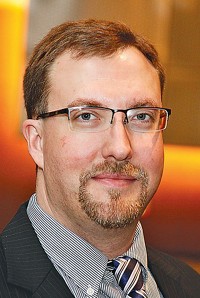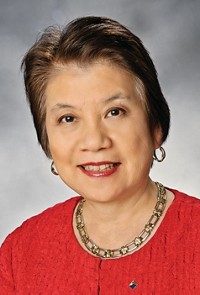Advertisement
Grab your lab coat. Let's get started
Welcome!
Welcome!
Create an account below to get 6 C&EN articles per month, receive newsletters and more - all free.
It seems this is your first time logging in online. Please enter the following information to continue.
As an ACS member you automatically get access to this site. All we need is few more details to create your reading experience.
Not you? Sign in with a different account.
Not you? Sign in with a different account.
ERROR 1
ERROR 1
ERROR 2
ERROR 2
ERROR 2
ERROR 2
ERROR 2
Password and Confirm password must match.
If you have an ACS member number, please enter it here so we can link this account to your membership. (optional)
ERROR 2
ACS values your privacy. By submitting your information, you are gaining access to C&EN and subscribing to our weekly newsletter. We use the information you provide to make your reading experience better, and we will never sell your data to third party members.
Policy
IYC 2011: Global Collaboration
June 27, 2011
| A version of this story appeared in
Volume 89, Issue 26

What an honor and privilege it is to be president of the largest professional chemistry society in the world during the International Year of Chemistry (IYC). I thank the American Chemical Society members for this opportunity. Although we are only halfway through the year, I would like to share with you what I have learned during the IYC celebrations and visits to sister societies.
We all have the same problems. Chemists from most countries consider the poor teaching of science—especially chemistry—at the K–12 level a significant problem. Also, the public perception of chemistry is a problem all over the world.
The coming challenges for the global community in the next 50 years are described by chemists I meet as serious and daunting. These challenges are driven by a projected world population of 9 billion, and the questions are how to feed everyone, how to provide energy and clean water, and how to do it all in a sustainable way, including reducing greenhouse gases in Earth’s atmosphere.
These challenges and concerns are expressed by scientists from all walks of life including Andrew N. Liveris, chief executive officer of Dow Chemical; Ellen J. Kullman, CEO of DuPont; Rita R. Colwell, former National Science Foundation director (watch the U.S. kickoff of the International Year of Chemistry: tinyurl.com/IYCWebcast); and leaders of chemical societies in Asia, Africa, and South America.
Although no one knows exactly how to address these challenges, we all agree that collaboration and chemistry are crucial in our search for solutions.
The one question asked of me by nearly every scientist I encounter from a developing or emerging country is, “How can I collaborate with U.S. scientists?” I often get that question from chemists in developed countries, too.
Chemical scientists from developing and emerging countries have so much to offer the U.S. chemical community. This includes possibilities as simple as access to exotic and promising natural products from remote corners of Earth. It can also mean learning about the creative and economical uses of green chemistry, such as those practiced in Brazil.
But most striking is the personal and professional inspiration that I consistently find through knowing chemists from Africa and other developing regions of the world. Their dedication, enthusiasm, and vision convince me that chemistry really can make the world a better place.
A Canadian chemist who has had similar experiences pointed to three Cameroonian chemistry professors who had each spent a year as a visiting scientist at his university. They all brought a motivation and excitement to the department’s graduate students that no one else had ever managed. The Cameroonian professors empowered the Canadian students to believe they could be significant contributors to changing the world for the better. The perseverance, optimism, and personal wisdom it takes to lead as a chemistry professor in a developing country is both humbling and inspiring. The opportunity to meet some of these professors has been the personal highlight of my career.
Whether I am reading The Economist, watching Al Jazeera, listening to one of Sandia National Laboratories’ advisory boards on international issues, or attending a U.S. Department of State-sponsored workshop, I hear about the U.S.’s declining political and economic influence in the world. However, countering that perception is the fact, documented through recent polls, that U.S. scientists and the U.S. scientific enterprise remain highly respected throughout the world. I see that respect wherever I go. The question I never am asked directly but that I see in most people’s eyes and hear through polite and diplomatic discussion is, “Why isn’t the U.S. scientific community using its creativity, strength, and depth to lead, hand in hand with the rest of the global scientific community, an effort to address the daunting and serious challenges facing us in the next 50 years?”
There are many answers to that question. Some U.S. scientists are trying hard to address the challenges of food, water, energy, and health. But energy funding in the U.S. has been surprisingly low for many years. Unemployment among U.S. chemists is disturbingly high right now. Many U.S. professors would very much like to collaborate with their colleagues in different countries, but they don’t know how to find a professor with similar interests. Finding mutual financial support for international collaborative research—especially if one member of the team is from a developing country—is virtually impossible.
Although I am always reminding colleagues that IYC is supposed to be educating the nonchemists of the world about the wonders and promises of chemistry, maybe we, the chemical community, should take this very special year to think about our role in the international community. What responsibilities do we have to the international scientific community? What responsibilities do we have as scientists to the global community in general? Would we like more collaboration with our colleagues across the world?
I know that, so far, IYC has motivated me to spend my future volunteer time with ACS (even beyond my presidential year) to help enable collaborations between chemists in the U.S. and chemists in other countries. Please let me know if you want to help; e-mail me at president@acs.org.
Views expressed on this page are those of the author and not necessarily those of ACS.





Join the conversation
Contact the reporter
Submit a Letter to the Editor for publication
Engage with us on Twitter